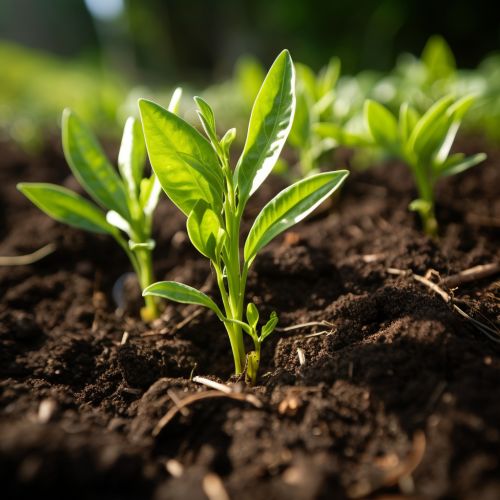Mechanisms of Plant Defense Against Soil-Borne Pathogens
Introduction
Plants, as sessile organisms, have evolved a variety of defense mechanisms to protect themselves against a wide range of pathogens. Soil-borne pathogens, which include a variety of fungi, bacteria, nematodes, and viruses, pose a significant threat to plant health and productivity. This article explores the various mechanisms that plants employ to defend themselves against these soil-borne pathogens.


Physical Defenses
The first line of defense for a plant against soil-borne pathogens is its physical barriers. These include the plant's cuticle, cell walls, and root structures.
Cuticle
The cuticle is a waxy, water-repelling layer that covers the aerial parts of a plant. It serves as a physical barrier that prevents the entry of pathogens.
Cell Walls
The cell walls of plants are composed of cellulose, hemicellulose, lignin, and other components. They provide structural support to the plant and act as a physical barrier against pathogen invasion.
Root Structures
The roots of a plant, which are in direct contact with the soil, have several structures that help defend against soil-borne pathogens. These include the root hairs, cork layer, and the endodermis.
Chemical Defenses
In addition to physical barriers, plants also employ a range of chemical defenses against soil-borne pathogens. These include the production of antimicrobial substances, phytoalexins, pathogenesis-related proteins, and hormones.
Antimicrobial Substances
Plants produce a variety of antimicrobial substances that inhibit the growth of pathogens. These include phenolic compounds, terpenoids, alkaloids, and glycosides.
Phytoalexins
Phytoalexins are antimicrobial substances that are synthesized by plants in response to pathogen attack. They are typically produced at the site of infection and inhibit the growth of the invading pathogen.
Pathogenesis-Related Proteins
Pathogenesis-related proteins are a group of proteins that are produced by plants in response to pathogen attack. They have a variety of functions, including the degradation of pathogen cell walls, inhibition of pathogen enzymes, and the production of reactive oxygen species.
Hormones
Plants produce a variety of hormones that play a role in defense against pathogens. These include salicylic acid, jasmonic acid, and ethylene, which regulate the plant's immune response.
Induced Systemic Resistance
In addition to physical and chemical defenses, plants also employ a strategy known as induced systemic resistance (ISR). This is a mechanism whereby a localized infection triggers a systemic immune response in the plant, enhancing its resistance to future pathogen attack.
Conclusion
Plants employ a variety of mechanisms to defend themselves against soil-borne pathogens. These include physical barriers, chemical defenses, and induced systemic resistance. Understanding these mechanisms is crucial for the development of sustainable strategies for plant disease management.
